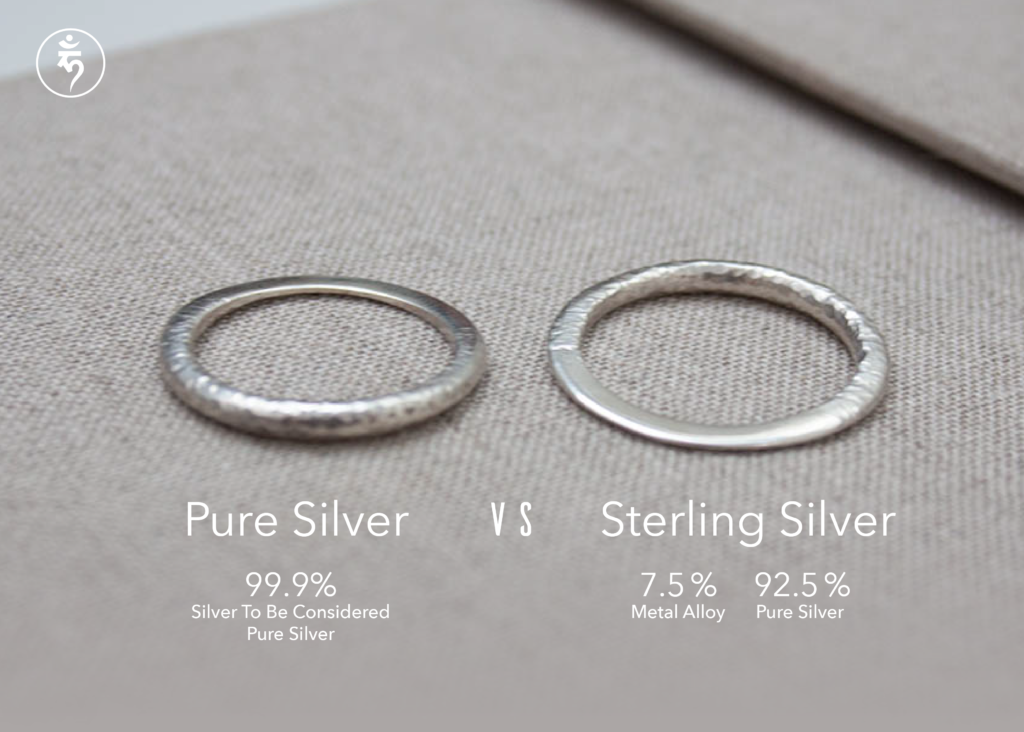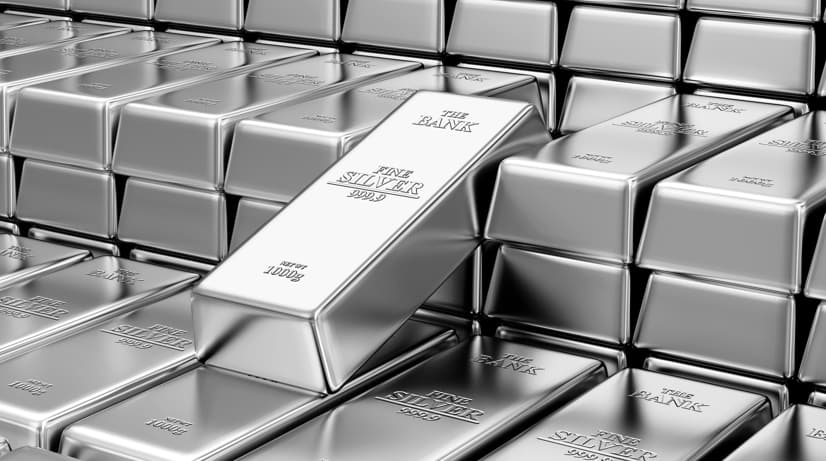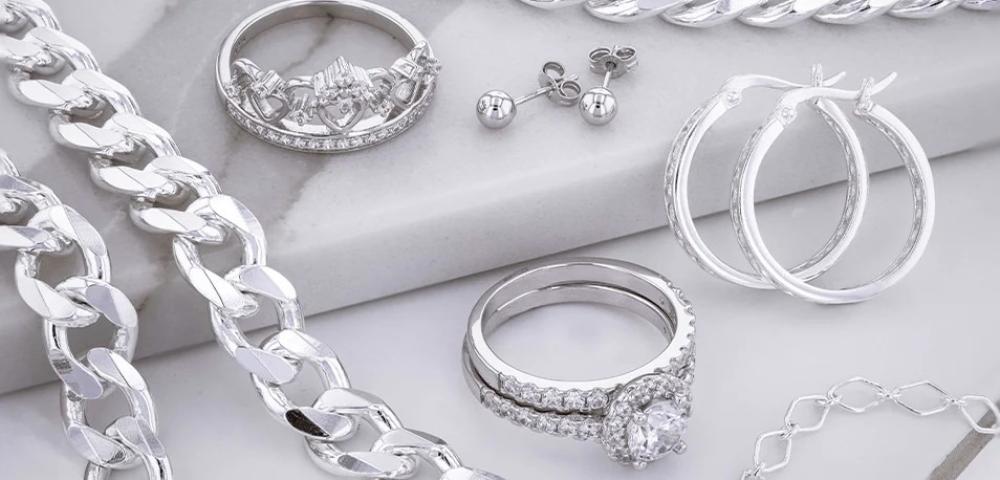When we talk about silver, we always think of its beautiful shine and unique elegance. Whether you are looking for accessories that add a luxurious touch to your everyday look or looking for a piece that matches special occasions, silver offers you the perfect solution. Specifically, 925 silver, also known as sterling silver, stands out as a preferred choice for many who value the balance between quality and beauty. In this article, we will take you on a detailed tour to understand the difference between pure silver and 925 silver, and how you can easily distinguish between them.
What is 925 silver?
When we talk about 925 silver, we are referring to a specific type of silver also known as sterling silver. It is a balanced combination of pure silver and other metals. Specifically, sterling silver is 92.5% pure silver, while the rest is made up of other metals, often copper being the added element. This combination gives 925 silver its durability and hardness, making it suitable for everyday accessories that need to maintain their shape and shine.
What makes 925 silver so special is its ability to maintain its shine and beauty for long periods of time, especially if properly cared for by cleaning and polishing the silver regularly. When compared to other types of silver, sterling silver offers the perfect balance of practical beauty and durability, making it one of the best types of silver for everyday use.
What is pure silver?
If you’re looking for pure silver , it’s silver that’s 99.9% pure silver, making it one of the rarest and most authentic metals. Also known as “fine silver,” this silver is known for its extreme shine and clarity. However, it comes with some challenges, as pure silver is very soft by nature and can easily scratch and bend, making it less practical for everyday use in jewelry and accessories.
If you are looking for a piece of silver that is characterized by the highest degree of purity and beauty, pure silver may be your preferred choice, but remember that it needs special care to maintain its appearance. This is where the need comes in to use specialized products for cleaning and polishing silver to maintain its luster and prevent it from oxidizing or changing color over time.
While pure silver is considered a rare and special type of silver , it is not always the best choice for jewelry that needs to endure everyday wear, such as 925 silver . This makes pure silver an ideal choice for decorative pieces or unique pieces used for special occasions.

Differences between pure silver and 925 silver
When looking for the perfect accessory, people often face the question of what types of silver are best for everyday use. One of the most common questions is the difference between pure silver and 925 silver, also known as sterling silver . To better understand this difference, let’s take a look at the key factors that distinguish the best types of silver:
1. Purity and alloys
Pure silver contains 99.9% pure silver, which makes it shinier, but also softer and less resistant to the elements. In contrast, 925 silver contains 92.5% pure silver and 7.5% other metals, most often copper. This percentage of added metals gives sterling silver greater hardness and durability, making it the perfect choice for everyday accessories that need to withstand stress without tarnishing or damaging it.
2. Durability and toughness
Pure silver, despite its beauty and high luster, is very soft and easily scratches and bends. This makes it unsuitable for use in pieces that require high durability, especially accessories that are worn on a daily basis. On the other hand, 925 silver is harder and more durable due to the presence of copper in its composition. This gives it a great advantage in designing jewelry and accessories, as it maintains its shape and luster for a longer period without being exposed to rapid damage, making it one of the best types of silver for daily use.
3. Oxidation and corrosion
Because 925 silver contains a percentage of copper, it may oxidize over time, causing a dark layer to appear on its surface. This oxidation is caused by the reaction of copper with air and moisture. In contrast, pure silver rarely oxidizes, as it does not contain other metals. However, oxidation in sterling silver is not a major problem, as it can be easily removed using some simple methods such as cleaning and polishing the silver with a soft cloth or using special cleaning products.
925 Silver: The Perfect Choice
Between pure silver and 925 silver, the latter is the most popular and preferred choice for everyday use. Sterling silver combines beauty and durability, making it one of the best types of silver to use in jewelry and accessories. Additionally, the ease of cleaning and polishing 925 silver makes it an ideal choice for those looking for pieces that will last and maintain their beauty over time.
Read also: Learn about the types of silver and the best of them with Verona
How to distinguish pure silver from 925 silver?
To determine the difference between pure silver and 925 silver, you can rely on several easy indicators to help you choose the right piece. Here are the most prominent ways to distinguish the best types of silver :
- Engravings and Markings: 925 silver often has a small engraving on the piece, either the number “925” or the word “Sterling.” This engraving is proof that the piece is made of sterling silver. Pure silver may be marked “999” to indicate its purity.
- Magnet Test: Silver, whether pure or 925 silver, does not attract magnets. If the metal is attracted to a magnet, the piece contains other metals and is not considered the best silver.
- Oxidation Test: 925 silver may oxidize over time, forming a dark layer on its surface due to the copper in it reacting with air. In contrast, pure silver rarely oxidizes, making this test useful. Oxidation can be easily removed by cleaning and polishing the silver with special tools.
- Sound Test: When struck gently, 925 silver produces a longer, deeper ring compared to pure silver, which produces a lower-pitched sound.
- Scratch Test: Pure silver is very soft and can scratch easily, while sterling silver is more durable and can withstand daily use better.

Top 5 Ways to Clean and Polish Silver at Home
Here are some easy ways to clean and polish 925 silver at home:
- Warm water and soap: Fill a bowl with warm water and add a little mild soap, then soak the silver for 5-10 minutes, then clean it with a soft brush, rinse it and dry it with a soft cloth to restore its shine.
- Baking soda and salt: Place aluminum foil in a bowl, add baking soda and salt with hot water, then place the silver in the mixture. Leave it for 5-10 minutes, then rinse and dry. This method is effective in removing oxidation.
- Toothpaste: Put a little toothpaste on a soft cloth or toothbrush, gently rub the silver, then rinse and dry to restore its shine.
- Vinegar and baking soda: Soak the silver in a mixture of vinegar and baking soda for 2-3 hours, then wash and dry well to remove the tarnish.
- Polishing Wipes: Use ready-made silver cleaning and polishing wipes to gently wipe silver and quickly restore its shine.
Frequently asked questions about pure silver and 925 silver.
Q1 / What is the best type of silver?
The best type depends on the use. If you are looking for durability and quality for everyday use, 925 sterling silver is the ideal choice. On the other hand, pure silver (99.9% silver) has a more lustrous appearance but is very soft and easily damaged.
Q2/ What does sterling silver mean?
Sterling silver is an alloy made up of 92.5% pure silver and 7.5% other metals (often copper). This combination gives silver strength and durability, making it a popular choice for jewelry and accessories. It is also known as 925 silver due to the high percentage of silver in the alloy.
Q3/ Is 925 silver a substitute for pure silver?
Yes, for most uses, 925 silver is an excellent alternative to pure silver. While pure silver is brighter and more lustrous, it is also soft and easily damaged. Sterling silver offers the perfect balance of purity and durability, making it suitable for everyday accessories.
Q4/ Does 925 sterling silver change color?
Yes, 925 silver may oxidize over time as copper reacts with air and moisture, causing a dark layer to appear on its surface. However, this layer can be easily removed by cleaning and polishing the silver using special products or home methods.
Q5/ How do I know silver?
You can check the best types of silver in several ways:
- Engravings: 925 silver often bears the engraving "925" or "Sterling".
- Magnet Test: Silver is not magnetic, so if a magnet is attracted, the piece is not real silver.
- Oxidation Test : Sterling silver may oxidize over time, indicating the presence of copper in the alloy.
Ultimately, whether you choose pure silver or 925 silver, each type has its own advantages. But if you are looking for the best types of silver to add a touch of luxury to your daily life, Verona undoubtedly offers you a range of the most luxurious accessories made of 925 silver with unparalleled quality.
Read this article: Discover the difference between 925 and s925 silver with Verona

